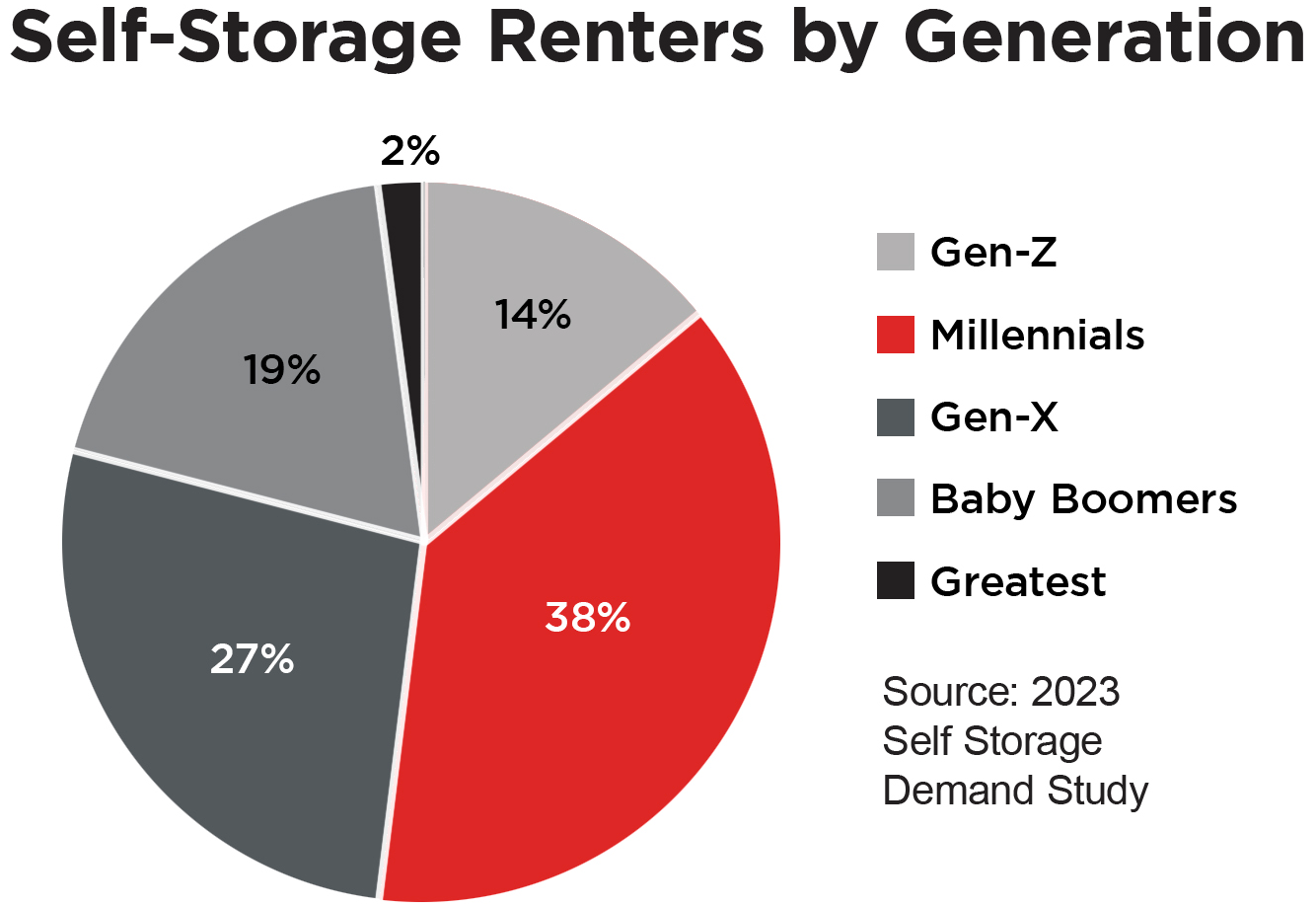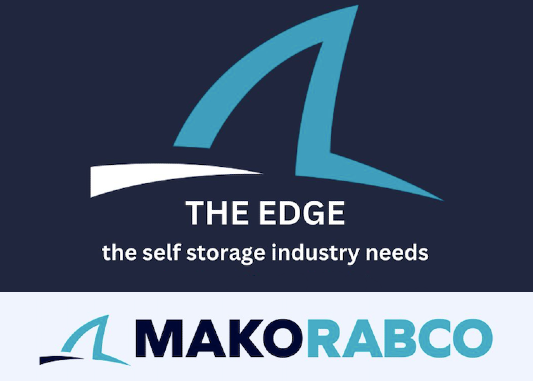Who's Who in Self Storage: Nathan Davenport, PTI Security Systems
According to information published by the Statista Research Department, millennials surpassed baby boomers to become the largest generation in the United States and boasted a population of 72.24 million in 2022. Presently, they’re also the most significant portion of a self-storage facility’s tenant mix. The Self Storage Association’s 2023 Demand Study reports that 38 percent of renters are 26 to 41 years old. Millennials now outnumber baby boomers two to one, with only 19 percent of renters representing the older age group (57- to 75-year-olds). The youngest generation, Gen-Z (those 18 to 25), makes up 14 percent of renters, bringing the total percentage of renters who are digital natives to 52 percent.
Meeting Expectations
Millennials also value other aspects of site security, such as electronic gates for accessing the site, with 75 percent of them placing importance on that feature and 44 percent agreeing to spend extra for it, and unit security alarms (65 percent say they are important, and 37 percent would pay more for an alarm on their unit).
Although most digital natives are seeking unlimited access to their units, self-storage owner-operators may be hesitant to provide it due to security concerns. “You’re missing that demographic if there’s not 24/7 access,” Davenport says, pointing out that a layered approach to security can alleviate apprehension by controlling wayfinding and monitoring visitors’ whereabouts through time-stamped data.
Take this hypothetical but realistic scenario into consideration: A tenant approaches the facility’s electronic gate at 10:15 p.m. and enters his code into the keypad. He is on site but doesn’t unlock his unit door until 11 p.m. What was that tenant doing during those 45 minutes? “You can’t tell what’s happening on a property,” says Davenport.
To minimize risk, he suggests having multiple access points throughout the facility, such as elevator keypads, that could prevent tenants from loitering, wandering about the facility, and “scoping out” other units. Davenport also advises owner-operators to divert traffic away from restricted areas like wine storage lockers.
Of course, cameras are one component of a comprehensive security package, but he reminds owner-operators that they are not typically continuously monitored and may not capture footage from every area of the property, thus making them a more passive (or reactive) element than the other cogs of a successful security machine.
“Tighter security can prevent false alarms,” he adds. It’s also known to improve the customer experience and provide owner-operators with beneficial data.

Do More With Data
As mentioned earlier, site-specific data reveals when tenants are on the property and how long they stay in their units. Per Davenport, this behavioral data can help owner-operators make decisions about rental rate increases. He gives these examples: Tenants who spend a long period of time within their units may be contemplating moving out; conversely, tenants who make quick visits are likely “stickier.” Knowing the length of time tenants spend in their units can “prevent churn,” he says, enabling owner-operators to identify who would accept a rental rate increase and who may move out over a price hike. Assessing this data can help owner-operators get tenants up to street rates in a more tailored time frame that doesn’t push them to pack up too soon.
“The sky’s the limit with data,” says Davenport.
Future Proofing
“Millennials don’t like to talk to folks,” he says. “They like to be in and out” and conduct business when it suits them. This kind of convenience is “facilitated by technology and automation.”
Data from the SSA’s 2023 Demand Study echoes his observations, reporting that half of millennial renters who responded to their study said having a person on site at all times is of least importance to them. Moreover, 61 percent of millennial renters use their smartphones to conduct internet searches. In other words, they are more comfortable using technology to complete tasks than previous generations.
Traditional manufacturers who only produced products to be wired together on a site now must become proficient in the manufacturing of hardware and the creation/distribution of firmware and software, which has become a byproduct of this shift to technology and to the cloud as well.
Another key component of the shift to remote management is the adoption of newer, smart technologies by the real estate investment trusts (REITs). As the industry has experienced with other operational aspects, such as the acceptance of revenue management systems and the posting of rental rates online, independent and regional operators tend to follow the leaders. Now that Extra Space Storage has acquired a portfolio of remotely managed properties and has begun installing smart locks on unit doors at other facilities across the country, it’s only a matter of time before customers come to expect similar features at other self-storage sites.
“What’s bleeding edge now [in other industries] will be in the self-storage industry within three years,” he says, adding that product lifecycles have been cut in half. “New tech is coming at a more rapid pace.”
Finally, customers are becoming more familiar with electronic locks thanks to their experiences at hotels and motels. Some are even swapping the traditional locks on their home doors with keypad locks, biometric locks, and/or locks that are operated via mobile apps.
“People don’t plan for storage in advance,” adds Davenport, “so it needs to feel like everyday life” when they go to rent a unit. “These technologies will be needed in the future.”
The ROI
“They can make ROI from these expenses,” says Davenport. “I’d be surprised if there was no ROI within two years.”
He goes on to say, “The ROI is helped by attracting higher paying and more renters. However, the biggest impact on ROI, by far, is the improved operational efficiencies, namely staff reduction.”
As technology continues to advance, and more of the population base becomes more digitally aware, expectations for all industries to adapt to newer and newer technologies will only increase. Forward-thinking owners and operators who recognize this fact and begin to plan for the future by installing platforms that are accepting of these newer technologies will put themselves at a distinct, long-term advantage.
More Content
Popular Posts
Recent Posts
In April 1984, the first non-stop commercial...
Raise your hand if you’ve ever made plans,...
Everyone knows it: Investing in real estate...
They say when one door closes, another one...
Like its name implies, Surprise, Ariz., a...
Self-storage has become as reliant on the...
Having a strong online presence is...
Social media and search engine...









